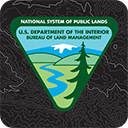The BLM cares for all kinds of public land resources, including invaluable ones
By Derrick Henry, Public Affairs Specialist
The Bureau of Land Management oversees all kinds of resources on public lands, including those resources that are difficult to define in economic terms. These “nonmarket benefits” reflect the value that the public gets from access to and preservation of our nation’s natural, scenic, recreational, and cultural resources. For example, what is the value of knowing that unique, healthy landscapes will always be available for a weekend hike or bike ride?
Some of these nonmarket benefits are outlined in our latest brochure on the BLM’s economic contributions from land management activities, Sound Investment 2022. The brochure provides a snapshot of how authorized use and management of BLM-administered lands supported $201 billion in economic output and nearly 783,000 jobs across the country in fiscal year 2021. In addition to these figures, the BLM identified resources that cannot easily be valued.
For example, BLM Utah partnered with the State of Utah to form a cultural site stewardship program to monitor 475 cultural resource sites. This program included 146 volunteers, more than 1,500 volunteer hours, and nearly 28,000 donated miles of travel. BLM-wide, approximately 12,463 volunteers contributed more than a half-million hours of service through partnerships and engagement programs.
Such programs need time, knowledge, and energy from people to maintain the health and nonmarket value of public lands, which have so far revealed 12.3 million objects and scientific specimens on loan to repositories, museums, and universities across the country. Additional nonmarket benefits include:
· more than 330 threatened or endangered species and 2,430 sensitive species live in BLM-managed habitat,
· more than 30 wildlife and plant species have been delisted, downlisted, or avoided threatened or endangered listing since 2010 with the help of BLM conservation and other efforts,
· the 251 species of plant seed that were collected on public lands to increase availability of native seeds for habitat restoration, and
· the 2,700 miles of designated wild and scenic rivers that the public can visit.
On your next visit to BLM-managed lands, it’s likely your experience will prove similarly invaluable. These lands are rich with resources and experiences that aren’t easily assigned a dollar figure.
BLM employees take government policy and turn it into real work on the ground. This article is based on information from the BLM’s 2022 Sound Investment brochure. The brochure, which uses fiscal year 2021 data, highlights the various activities that take place on public lands, and their contributions to the national economy. In fiscal year 2021, authorized use and management of BLM-administered lands supported $201 billion in economic output and nearly 783,000 jobs across the country.
